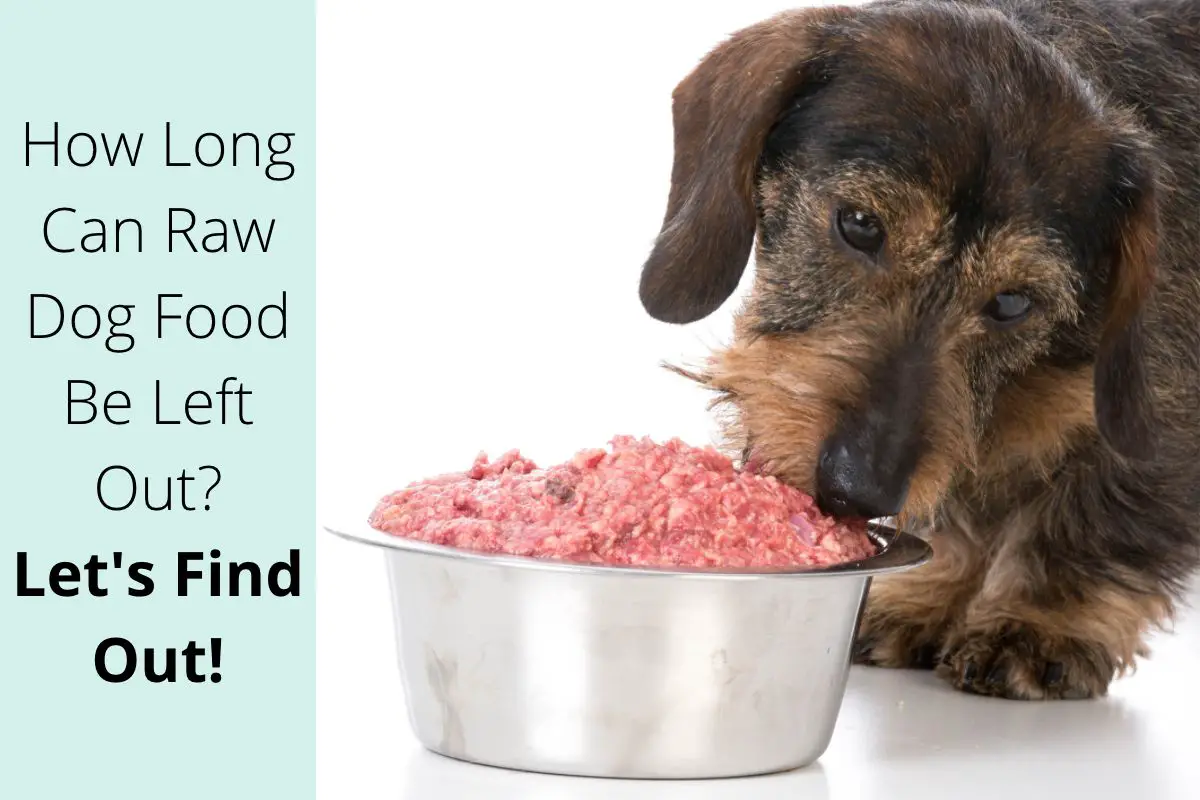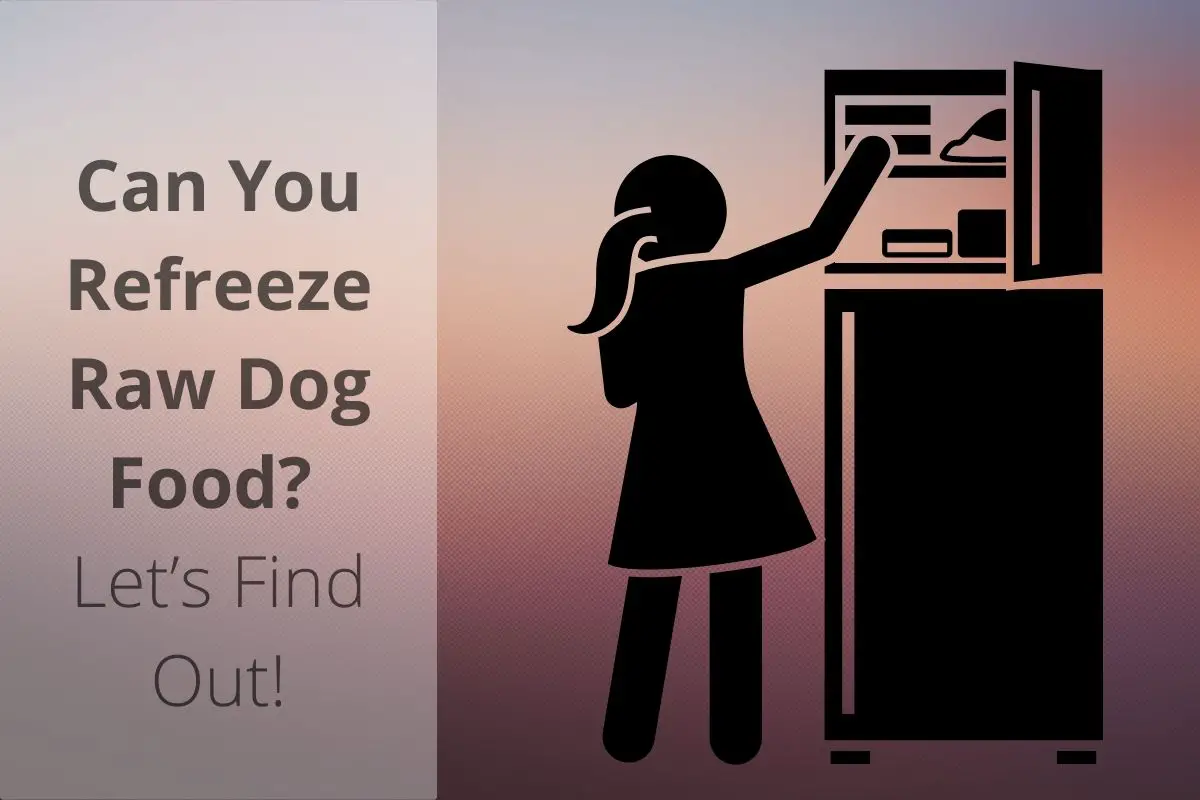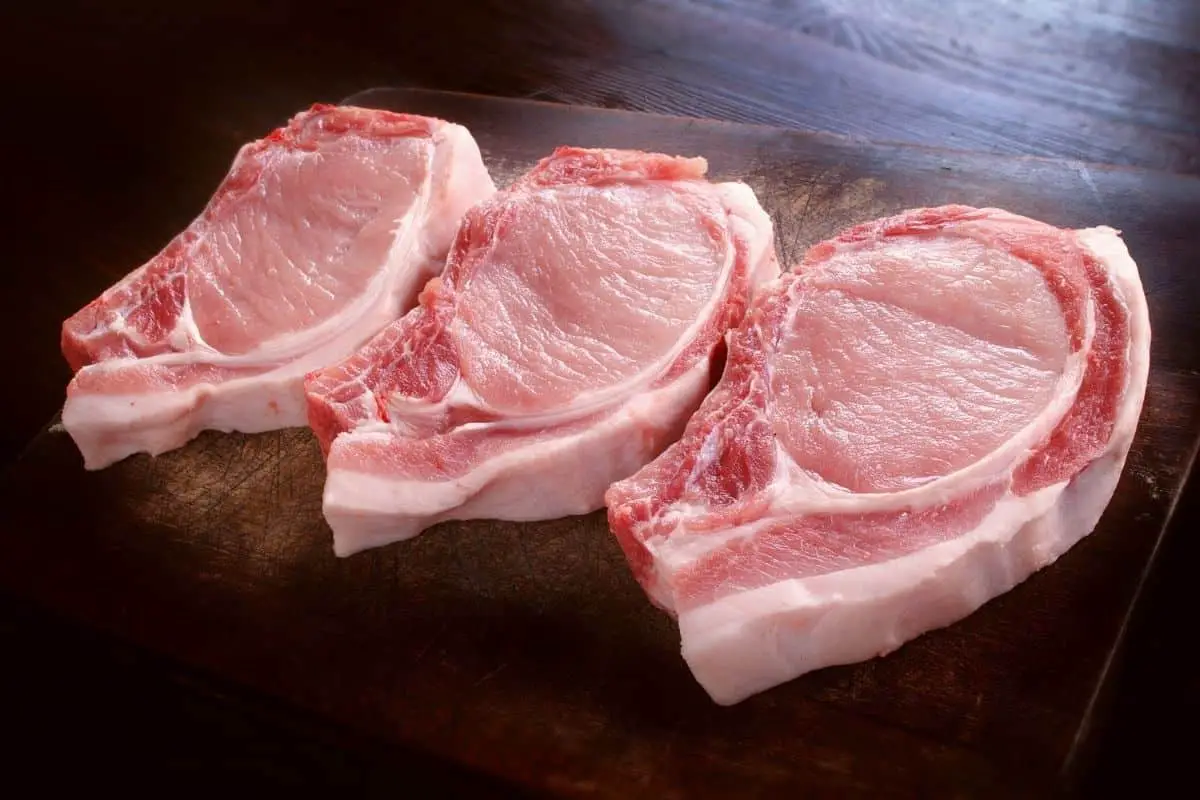This post contains affiliate links.
If you’ve had a dog as a pet for a while, you’ve probably had to deal with it not wanting to eat food at set times or food being left out accidentally for a while (or even overnight). Is raw dog food that’s left out safe for consumption? And if so, how long can it be left out?
Raw dog food can be left out no more than 2 hours at room temperature. However, this value may be even lower if the ambient temperature at your location is high. Leaving food at room temperature causes the rapid growth of bacteria, which can be harmful to your dog.
This article will go into more detail on why leaving raw dog food out is dangerous, how you can tell if your dog food has gone bad, and what you can do about it. Keep reading to find out more.
Table of Contents
Bacteria Multiply Rapidly in Food at Room Temperature
Leaving raw dog food out for long periods of time or overnight is likely to make it unfit for consumption. In raw dog food (and most other perishable foods such as meat and poultry), bacteria start to multiply rapidly as the food approaches room temperature. This is why perishable food is frozen in the first place: to avoid the multiplication of bacteria.
The danger of bacterial growth is even more applicable to raw dog food in particular. Wet or dry dog foods have a variety of ingredients and preservatives and are less likely to be inhabited by bacteria. Consequently, they can last relatively longer at room temperature and are often spoiled due to degradation of ingredients (via oxidation, for example) rather than the growth of bacteria.
Raw dog food is especially vulnerable to bacteria due to its high meat proportion and because raw food spoils faster than cooked food. Cooked food has already had a lot of bacteria eliminated from it during the cooking process.
Another drawback of raw dog food is that it isn’t uncommon for parasites to be present within the food. Parasites are also normally killed off during the cooking process, so raw dog food is notorious for infecting dogs with parasites.
Careful inspection of the dog food and buying from a trusted seller goes a long way in preventing parasitic infection.
How To Store Raw Dog Food
Raw dog food should always be stored in the freezer (or freeze-dried). Due to its high meat and poultry content, it becomes vulnerable to bacterial spread as it nears room temperature, so it must be kept at a temperature where bacteria can’t survive or reproduce.
It’s recommended to store raw dog food at under 40° F (4° C) for general storage.
How To Defrost Raw Dog Food
Your dog probably won’t enjoy eating food that’s completely frozen. You should defrost the frozen raw dog food before serving it to your dog. Regarding the defrosting process, it’s safest to defrost raw dog food by moving it from your freezer to your refrigerator.
The defrosting process will take anywhere from 12-24 hours, based on the settings of your fridge and the portion size. This can be somewhat tedious, but it’s important you do it this way, as the alternatives have drawbacks.
You might think about defrosting at room temperature or by using a microwave.
However, leaving raw food out at room temperature is risky for the reasons described above, i.e., bacterial growth. Using a microwave runs the risk of cooking parts of the raw food and damaging its nutritional integrity.
If you forgot to defrost the dog’s meal beforehand and are now in a pinch, you can consider using cold water to speed up the thawing process. Don’t use warm water, as it may also result in food spoilage.
How To Tell if Your Raw Dog Food Has Gone Bad
It’s important to note that in some cases, even though the dog food might look and smell good, it may still be infested with bacteria.
You can use instinct and observation to judge whether or not the dog food is safe for consumption (to some degree), but it’s better to be safe than sorry. Err on the side of caution, and dispose of raw dog food that’s been left out for over 2 hours at room temperature (or sooner if the food shows any signs of spoilage).
Here are some signs that the dog food has gone bad:
- A change in color.
- Visible mold.
- Foul smell.
- A smooth or slimy texture and the presence of moisture in the food.
- Your dog seems uncomfortable eating the food.
Dogs and Their Resilient Digestive Systems
You probably won’t be surprised to hear this. I mean, dogs can seemingly chew down just about anything, right? Dogs can eat many things that we humans can’t without getting sick.
Well, dogs are scavengers by nature. Their digestive systems have evolved to be resilient against food that’s spoiled or has bacteria because the food they naturally consume has a high chance of having one or the other (or both).
Several factors contribute to their resistance to bacteria. These include:
- Dogs have a shorter digestive tract compared to humans. The food stays in their system for a shorter period of time and has less time to potentially cause harm.
- Dogs have powerful stomach acid. It’s about a hundred times stronger than human stomach acid and is strong enough to dissolve bones.
- Dogs have evolutionary adaptations designed for resistance against the common bacteria found in food.
However, with all that being said, this doesn’t mean that dogs are entirely impervious to disease. It simply means that food which makes you sick is much less likely to make your dog sick. So you don’t have to be too worried if your dog eats something strange from time to time.
As you might already have experienced, dogs can get an upset stomach (or worse, an illness) if they consume spoiled food, especially since domesticated pet dogs aren’t quite as tough as their wilder counterparts.
Let’s take a look at some common signs of food poisoning next.
Common Signs of Food Poisoning
Very briefly, before we jump into the signs of food poisoning – it may be the case that your dog isn’t eating its food at mealtime or isn’t eating properly at all, which is leading to the dog food being spoiled. A loss of appetite, especially if it’s sudden, can be a cause for concern. If your dog has eating problems, refer to this resource by WebMD.
Here are the symptoms of food poisoning in dogs:
- Vomiting and Diarrhea
- Dehydration
- Dizziness or hyperactivity
- Cramping
- Seizures and tremors (in severe cases)
Minor cases of an upset stomach tend to pass away on their own. If your dog is too uncomfortable or is showing some of the more severe symptoms, you should consider getting medical attention.
If your dog is dehydrated, seek immediate medical attention. Severe dehydration can be life-threatening.
Contact your vet if you suspect food poisoning.
Final Thoughts
Raw dog food shouldn’t be left out for more than 2 hours at room temperature. If the area you live in has a high ambient temperature, food will spoil faster, so be on the lookout for signs of spoilage such as a change in color or a foul odor. You should store the raw dog food in a freezer under 40° F (4° C). Defrost it in the refrigerator for 12 hours before serving.
Dogs have resilient digestive systems, so the occasional bad meal is unlikely to do too much harm, but they aren’t completely impervious to food-borne illnesses.
Related articles
Mrdogfood.com is a participant in the Amazon Services LLC Associates Program, an affiliate advertising program designed to provide a means for sites to earn advertising fees by advertising and linking to Amazon.com. We also participate in other affiliate programs which compensate us for referring traffic.




